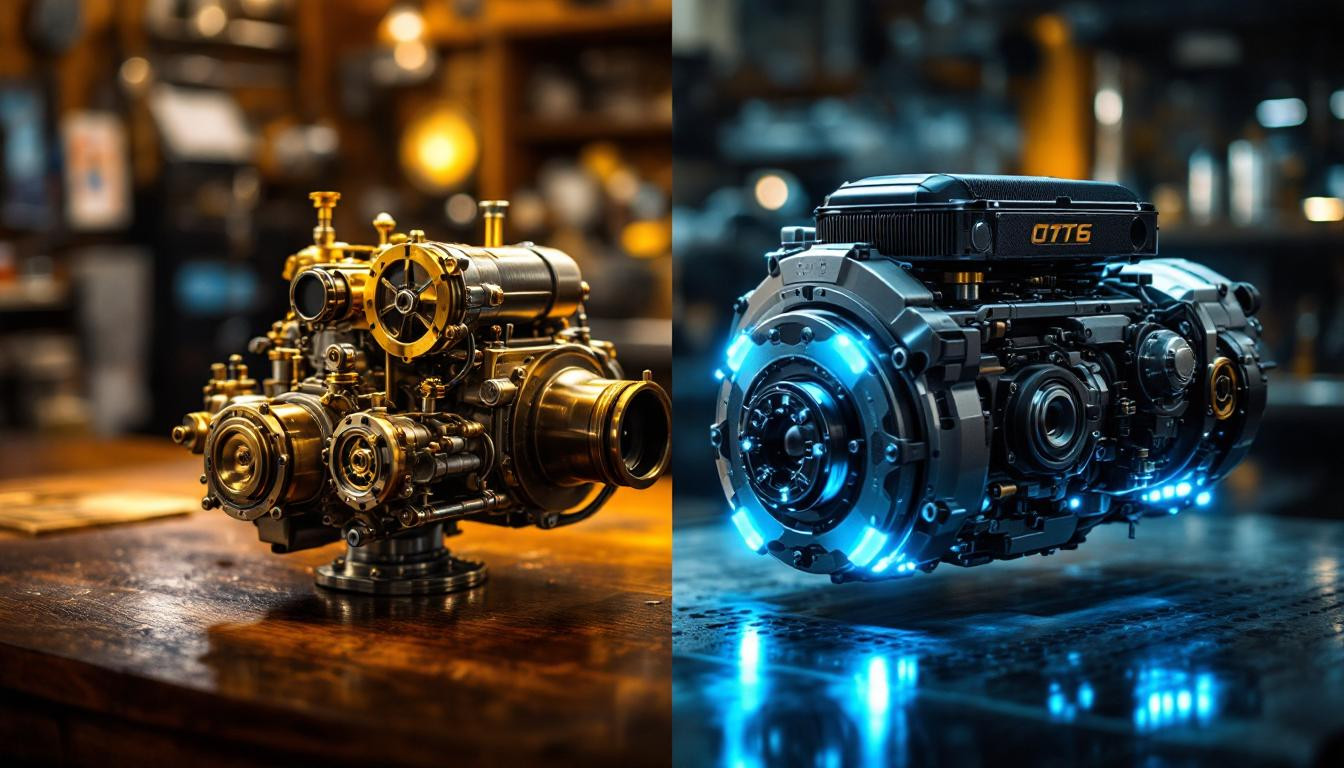As spring blossoms across America in May 2025, the automobile industry reflects on a remarkable journey. The internal combustion engine (ICE) has powered our vehicles for over a century, transforming transportation and shaping modern society. Today, we examine this engineering marvel’s evolution and contemplate its future in an increasingly electrified world.
The pioneering years: From experimental concepts to mass production
The story begins with Étienne Lenoir’s 1860 gas engine and Nikolaus Otto’s four-stroke design of 1876, which achieved roughly 10% efficiency. These innovations laid the groundwork for automotive pioneers like Gottlieb Daimler and Carl Benz, who adapted these engines for the first automobiles in the 1880s.
“The four-stroke Otto cycle became the blueprint that would define transportation for generations,” explains Dr. Andreas Truckenbrodt, Engineering Director at BMW. “From those humble beginnings with 10% efficiency, we’ve now reached thermal efficiencies exceeding 40% in modern engines – a remarkable engineering achievement.”
Technological milestones that defined a century
Several key innovations revolutionized combustion engines:
- Introduction of the electric starter (1911)
- Transition from mechanical to electronic fuel injection
- Widespread adoption of turbocharging technology
- Advanced emission control systems
The Ford Model T democratized automobile ownership, while later innovations like the high-performance engines showing that power and efficiency could coexist. Modern turbocharged engines now match the output of much larger naturally-aspirated predecessors while consuming significantly less fuel.
Environmental challenges and adaptive responses
“The automotive industry faced its greatest reckoning with the environmental movement of the 1970s,” notes Mary Barra, CEO of General Motors. “Catalytic converters, electronic engine management, and lean-burn technologies were our response – proving that combustion engines could evolve to meet societal demands.”
This evolution continues today as manufacturers develop more efficient combustion technologies while preparing for a transition that could reshape investment strategies across the automotive sector.
The hybrid bridge: Combustion meets electrification
Modern hybrid systems represent perhaps the most sophisticated evolution of combustion engines:
- Toyota’s Hybrid Synergy Drive pioneered mass-market hybrids
- Plug-in hybrids offer electric commuting with long-range capability
- 48V mild hybrid systems reduce emissions while improving performance
These technologies function like the automotive equivalent of finding innovative alternatives to traditional methods – enhancing efficiency while maintaining familiarity.
What’s next: Innovation or extinction?
Despite electrification’s momentum, combustion engines continue evolving. Porsche’s investment in synthetic e-fuels could potentially make traditional engines carbon-neutral, while variable compression ratio technologies push efficiency boundaries further.
“The future isn’t binary between combustion and electric,” explains Takumi Kurosawa, Engine Design Specialist at Acura. “We’re witnessing a diversification of propulsion technologies to meet different needs across global markets.”
For consumers, this transition may create investment considerations similar to how economic policies affect long-term financial planning.
As we reflect on a century of combustion engine innovation this spring, we recognize both its historical importance and the exciting technological renaissance underway. Whether powering classic cars with carbon-neutral fuels or serving as part of sophisticated hybrid systems, the combustion engine’s legacy continues to evolve rather than simply end – adapting to a changing world just as it has for the past hundred years.
